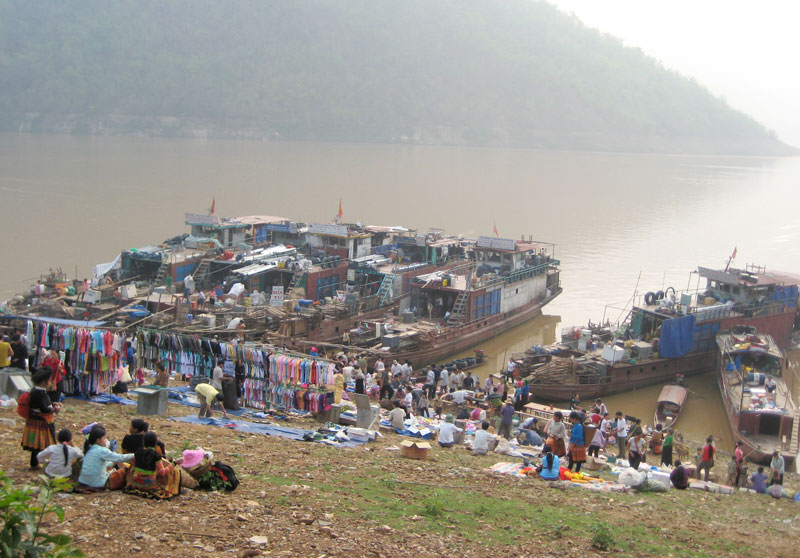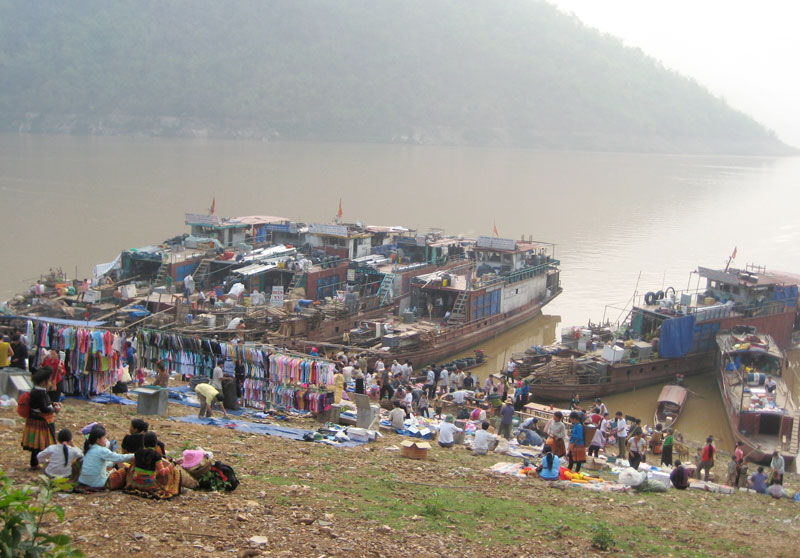


Due to the terrain characteristics, it is
more convenient to travel to the villages along the Da River by means of
waterways than travelling on roads; hence, there are many floating markets.
Almost every commune has a market place of the water wharf, boat harbor, where
ships and boats carry goods from down stream. This is also a place where the
local people sell their special products such as chicken, bamboo shoots, banana
pods, papaya, cassava roots, tubers self-grown, some forestry vegetables, fish
on the lake reservoir. There is every fair market in an approximate river
section of one or two communes and those regular markets are held every day in
turn in a month. The fair market of Tien Phong commune, on the road of Oi Noi
hamlet, along the river bank, is held three times a month, usually on the 10th,
20th and 30th of the month. Tra Ang fair market, in Vay Nua commune (Da Bac)
takes place on the 15th, 25th of the month. Hang Mieng Fair Market
in Quang Minh Commune, Van Ho (Son La Province) bordered on Suoi Nanh, Dong
Nghe (Da Bac) Communes open on the days of 1st, 2nd – 11th, 12th –
21st, 22nd.

The Fair Market is a very unique feature of
Hoa Binh Lake Reservoir. Photo: the fair market meeting in the area of Ngoi Hoa
commune, Tan Lac district.
The fair market areas are large yards close
to the lake or can be where the boats gather along the river. There is a small
bridge for people to see and purchase products. The market is always bustling
and crowded with buyers and sellers, on the habors and on the boats. The items
in the market on the lake are quite diversified. Traders come from many
provinces, most of which are Phu Tho, Son La, Bac Ninh, Hoa Binh, Hai Phong and
Nam Dinh. Traders of each province have their own special products, of which
mountain traders from Son La, Hoa Binh provide mainly brocading products, meat,
fish, agricultural and forestry products. Hai Phong, Bac Ninh, Phu Tho, Nam
Dinh supply mainly dried goods, clothes, shoes, electronic appliances.